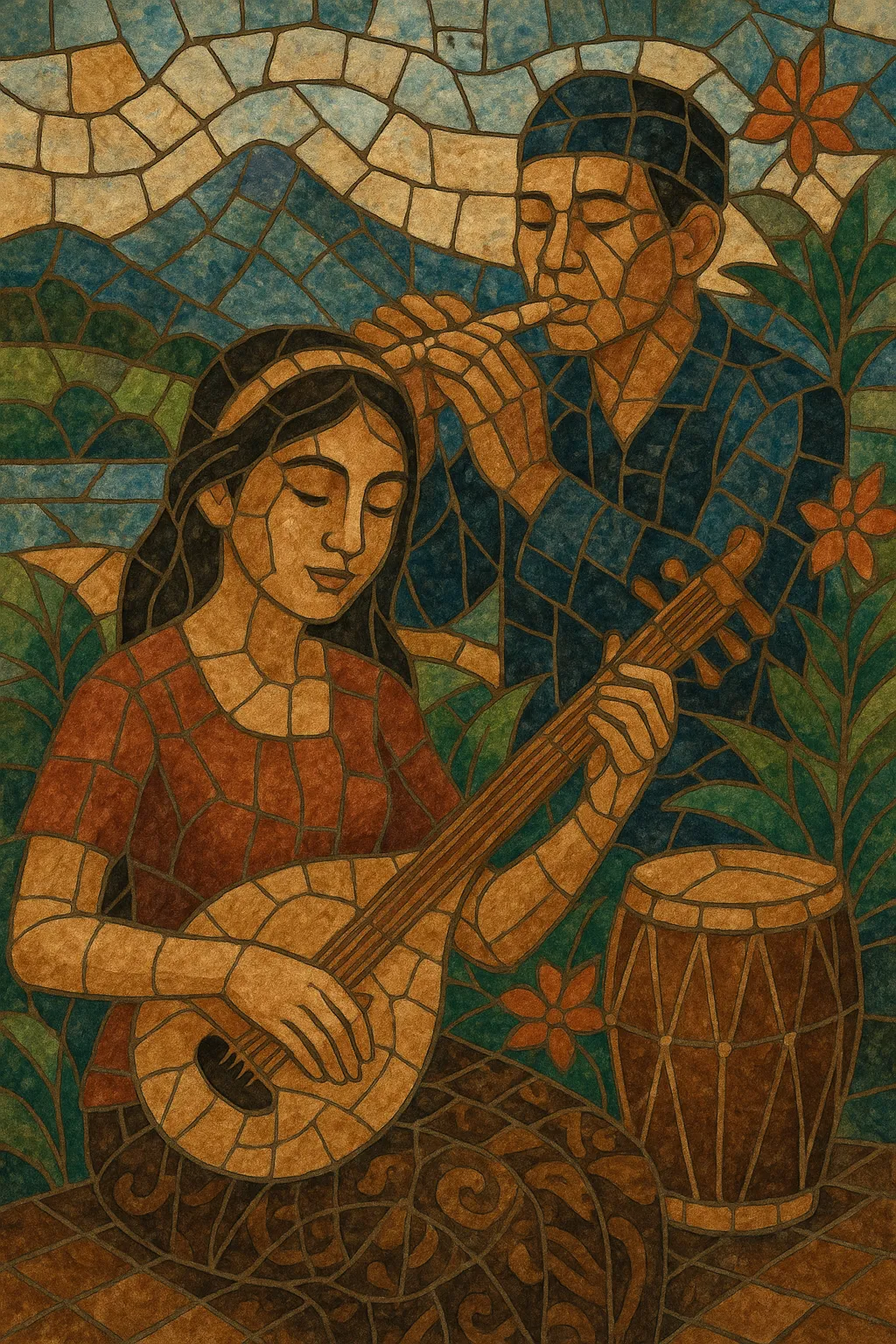Sundanese pop (Pop Sunda) is modern popular music sung in the Sundanese language of West Java, Indonesia. It blends Indonesian and Western pop songwriting with timbres, modes, and ornamentation drawn from Sundanese traditions such as tembang Sunda, kacapi suling, and gamelan degung.
Characterized by lyrical romance and humor, graceful melodies, and distinctive Sundanese scales (laras sléndro/pélog and madenda), the style often features bamboo flute (suling), zither (kacapi), and kendang rhythms alongside guitar, keyboards, and drum kit. Bandung and the broader Priangan region are its cultural heartlands, and many songs evoke local places, landscapes, and everyday life.
Sundanese pop emerged in the 1970s as a regionalized offshoot of Indonesian pop centered in Bandung (West Java). Artists and composers adapted Western/Indonesian pop song forms to the Sundanese language and sensibility, incorporating melodic turns, modal color, and poetic conventions from tembang Sunda and the intimate kacapi suling tradition. Early recordings favored acoustic textures, with suling and kacapi layered over simple pop rhythm sections.
The 1980s and early 1990s saw a commercial peak. Songwriters such as Nano S. and Mang Koko (Koko Koswara) supplied memorable melodies and lyrics, while singers like Nining Meida, Doel Sumbang, and Darso carried Pop Sunda into cassette markets across Java. Production broadened to include electric guitars, synthesizers, and polished studio arrangements, but retained emblematic Sundanese timbres and modal flavor. Hits from this period established canonical repertoire and a durable audience base.
From the 2000s onward, Sundanese pop diversified. Some artists pursued more acoustic, tradition-forward aesthetics; others experimented with jazz, R&B, or electronic elements, and live band formats borrowing rhythmic ideas from jaipongan and other West Javanese dance musics. Digital platforms helped sustain a translocal Sundanese audience, including migrants and diaspora communities. The genre remains an important vehicle for language vitality, local identity, and regional culture in Indonesia.
Sundanese pop is closely tied to West Java’s linguistic and poetic heritage. Lyrics often use sisindiran (witty, metaphorical couplets) and romantic imagery tied to Priangan landscapes. The music functions both as popular entertainment and as a contemporary expression of Sundanese aesthetics within Indonesia’s broader pop ecosystem.


